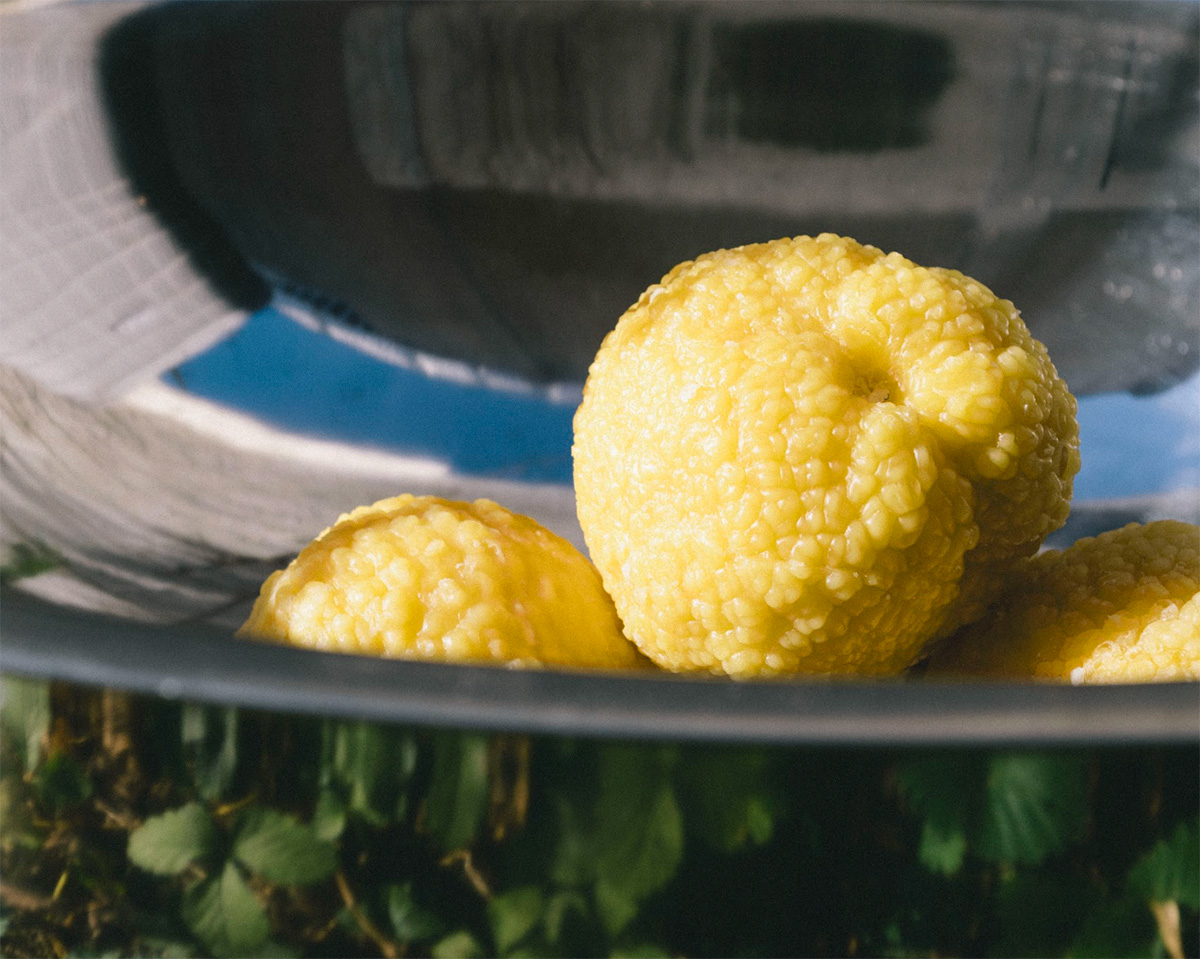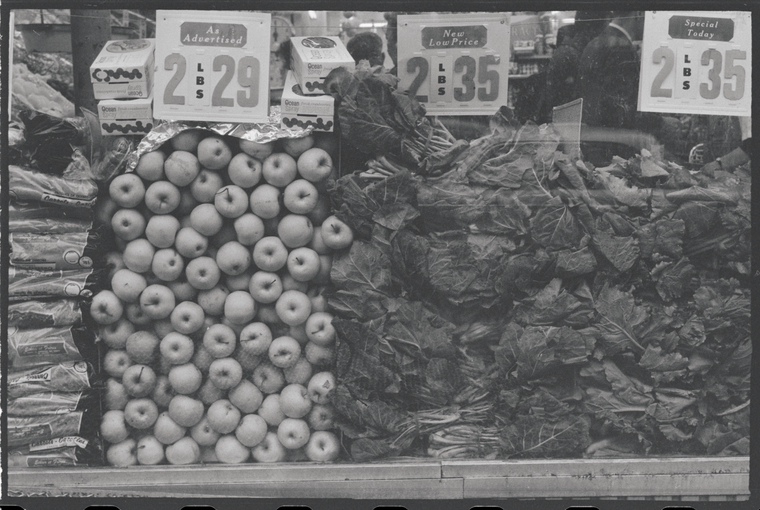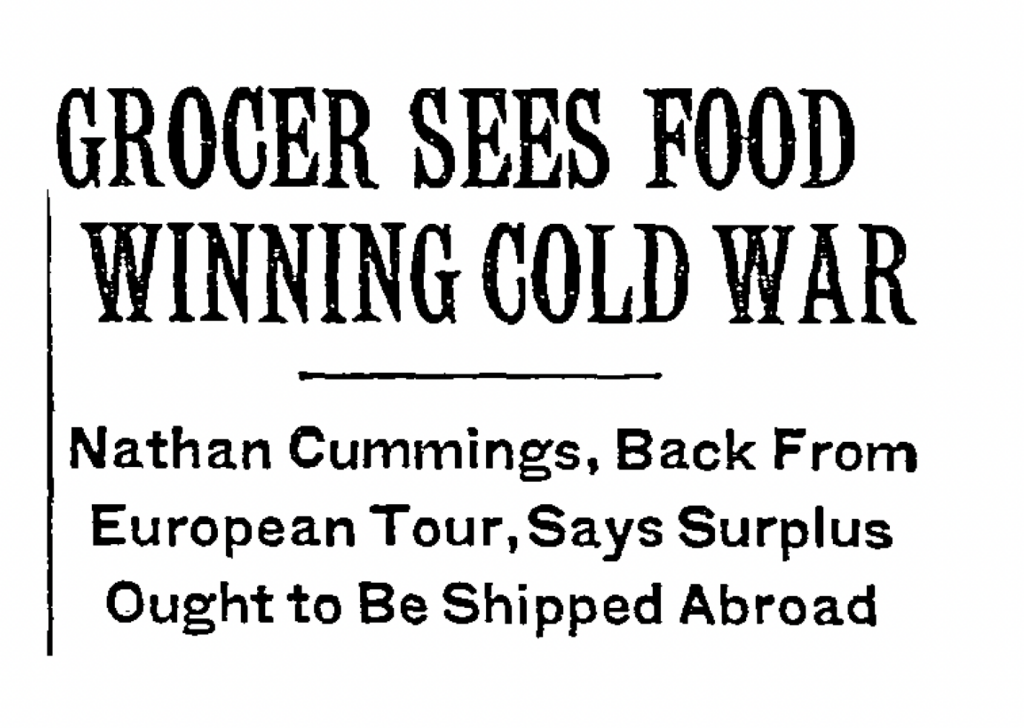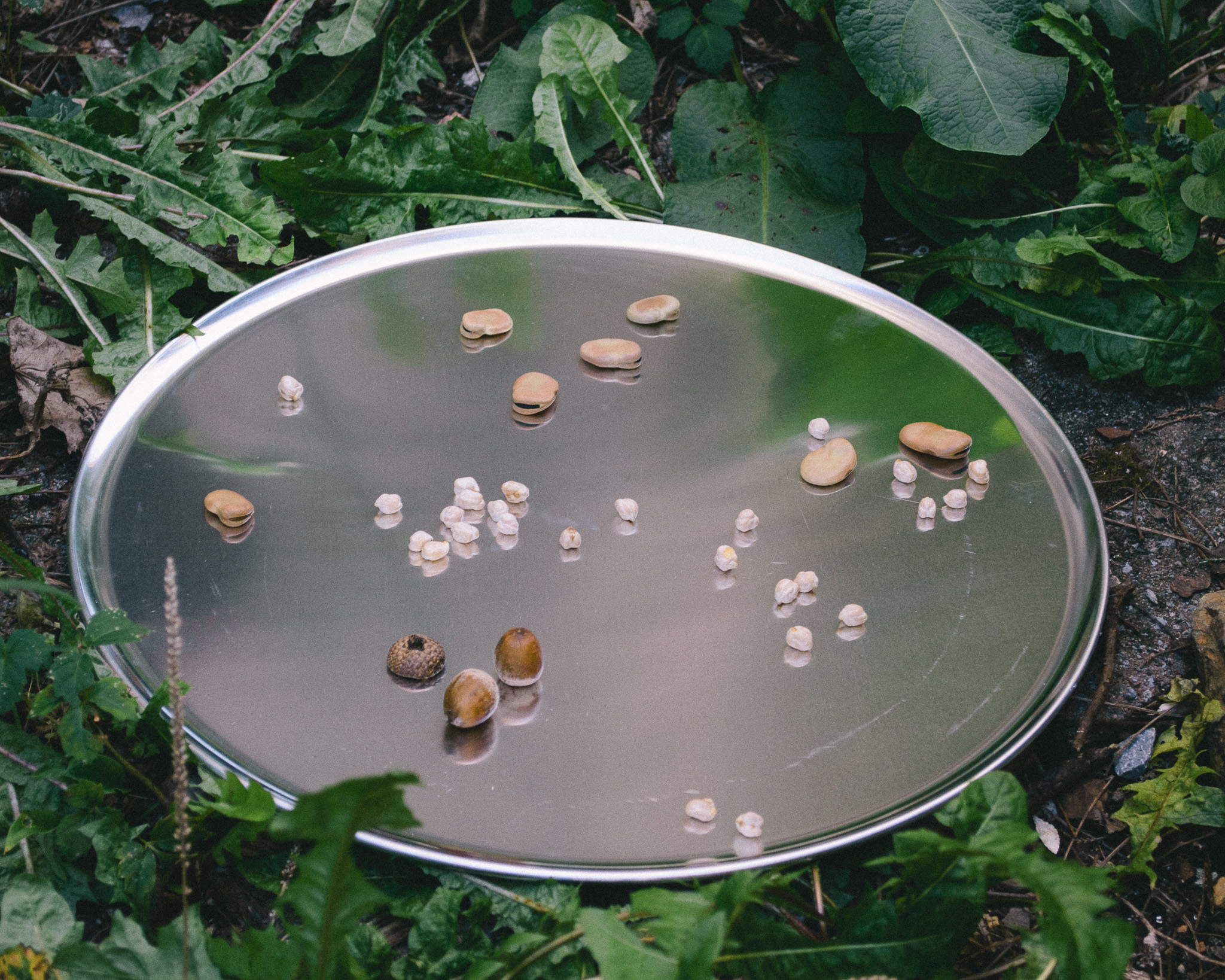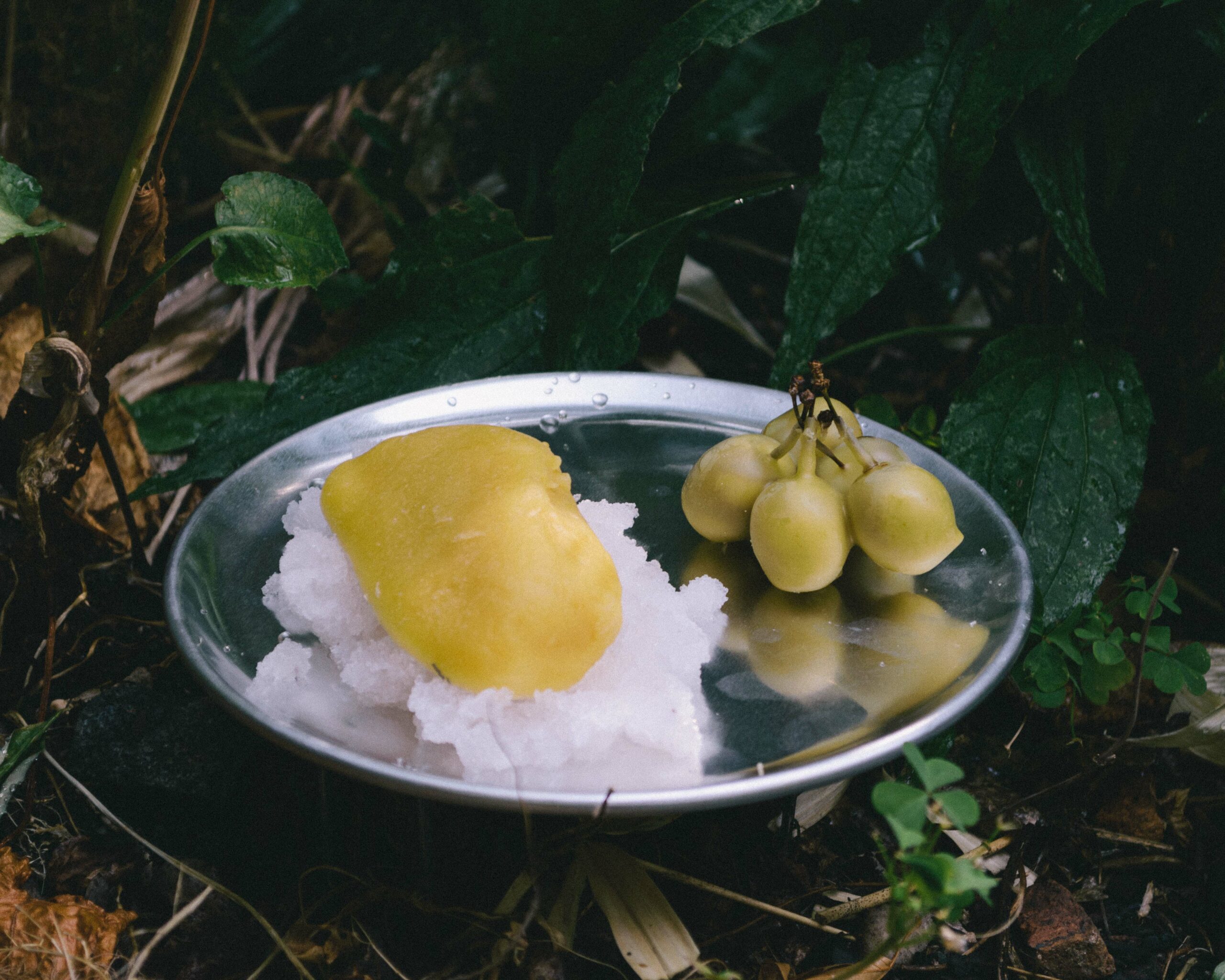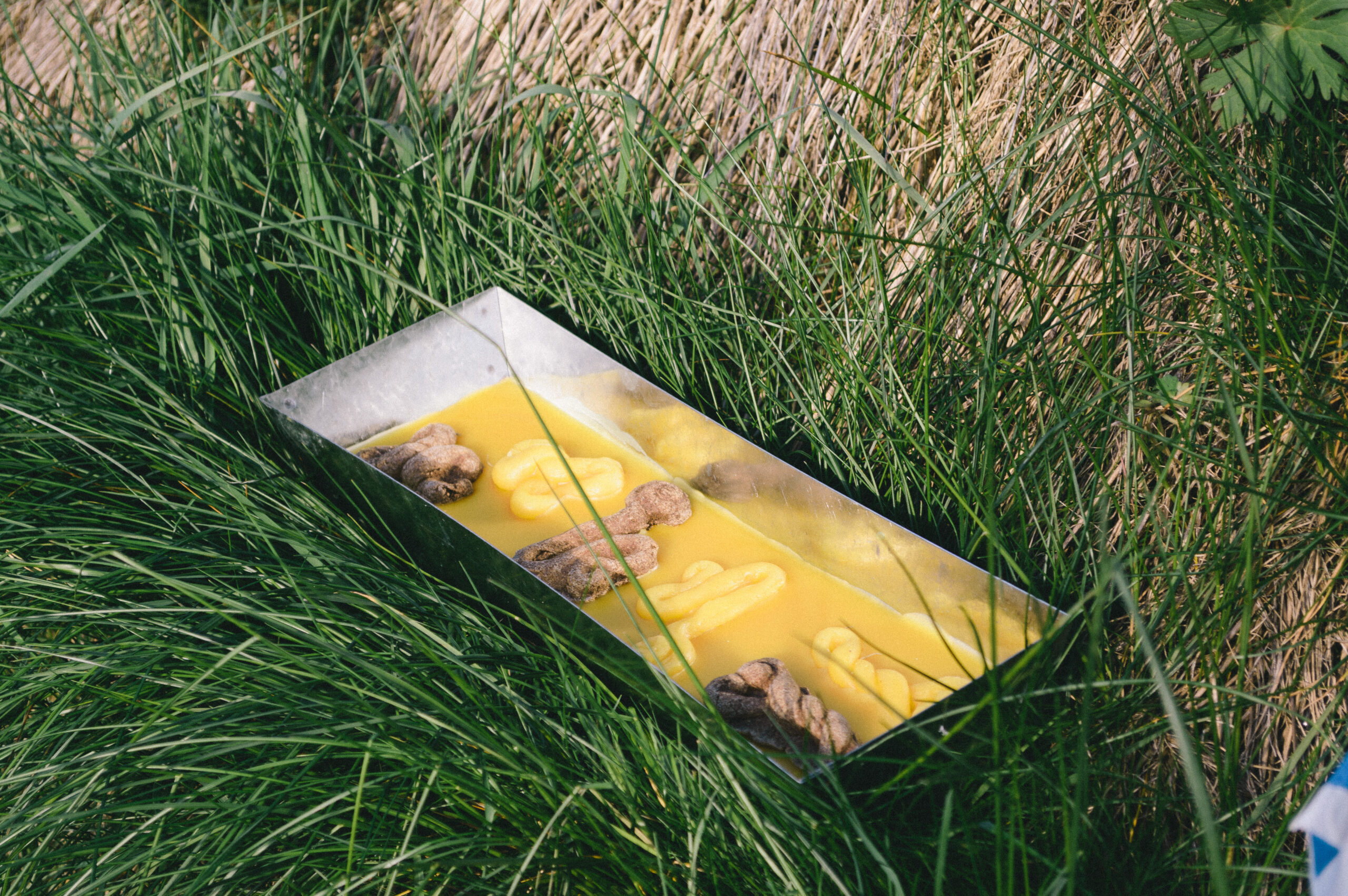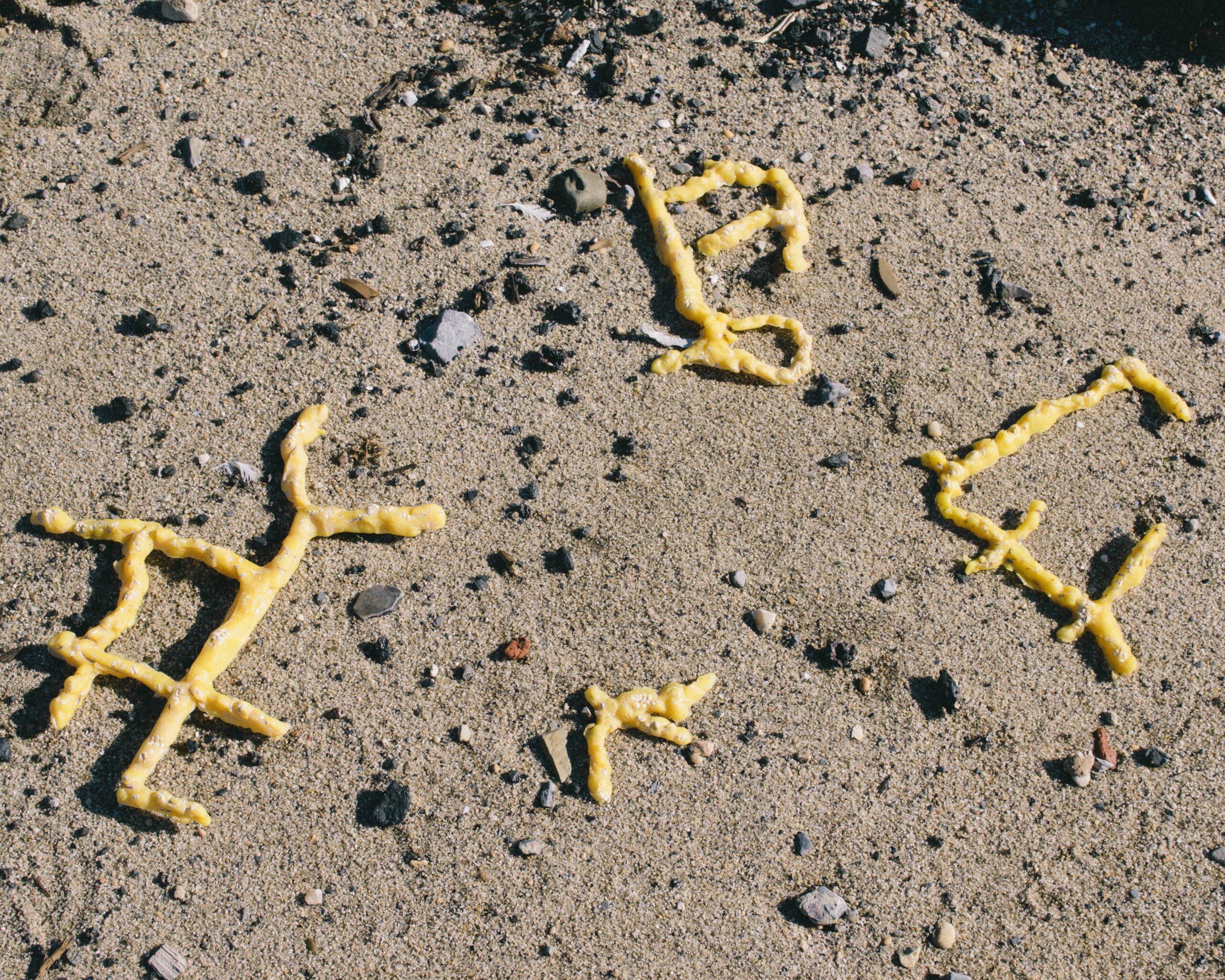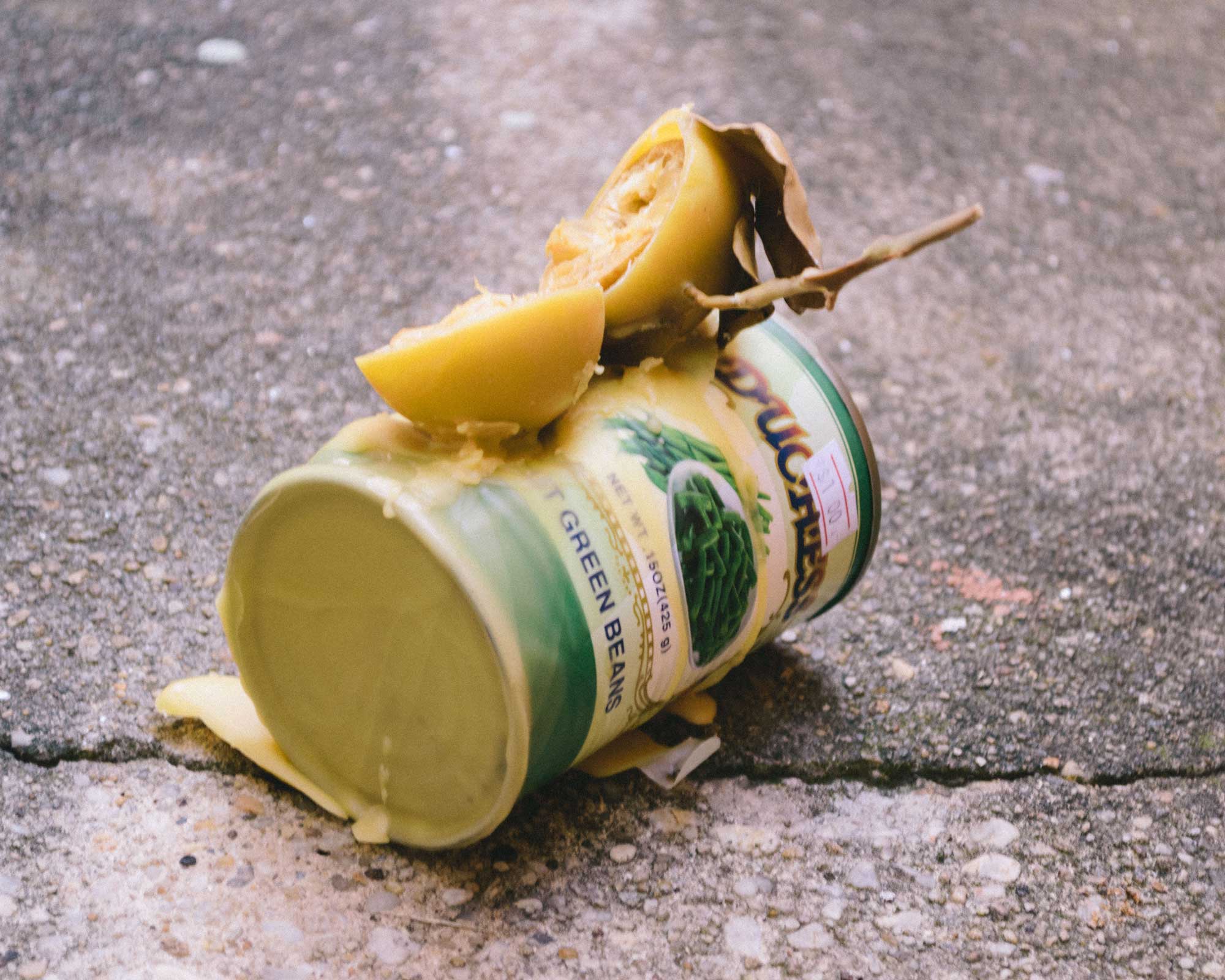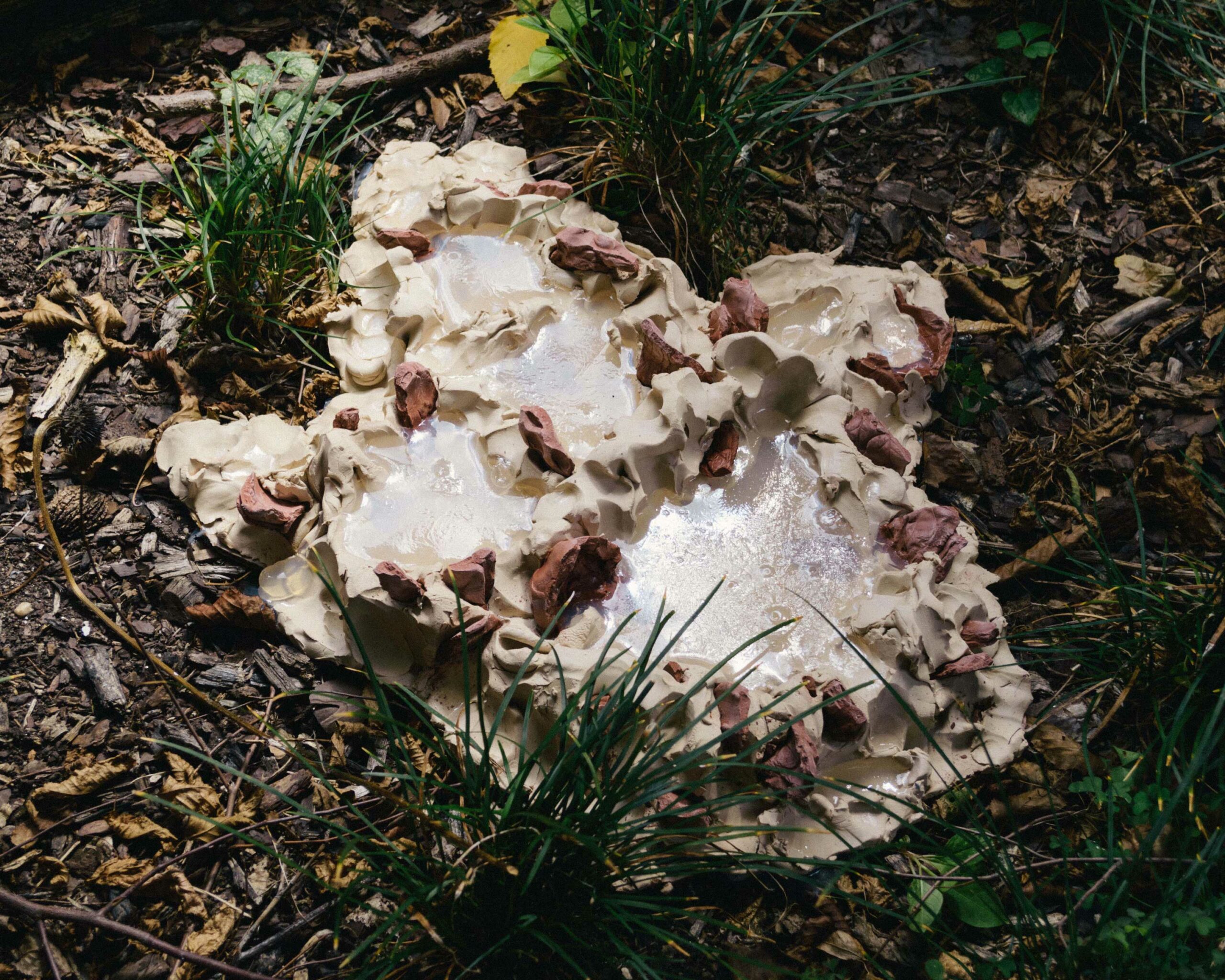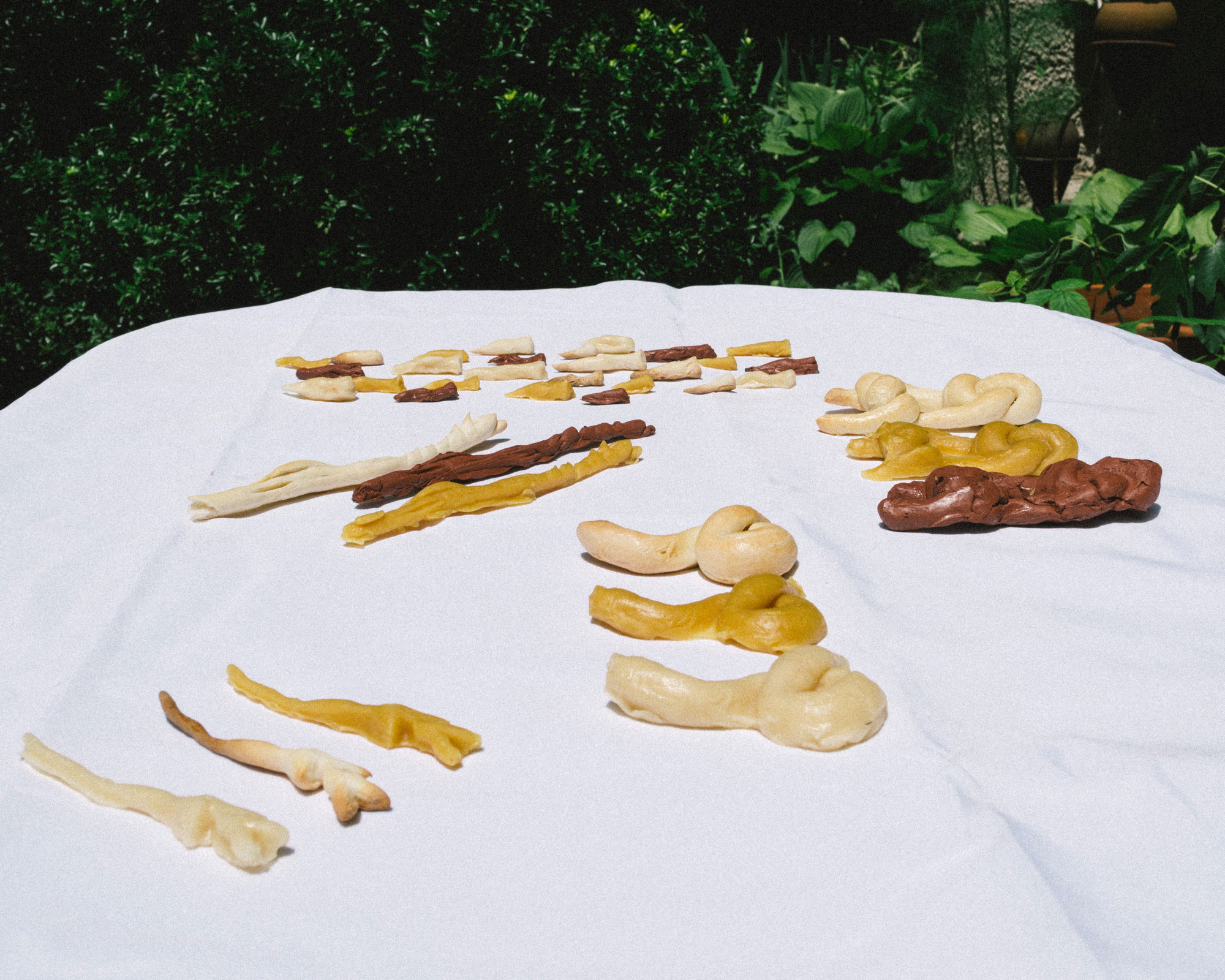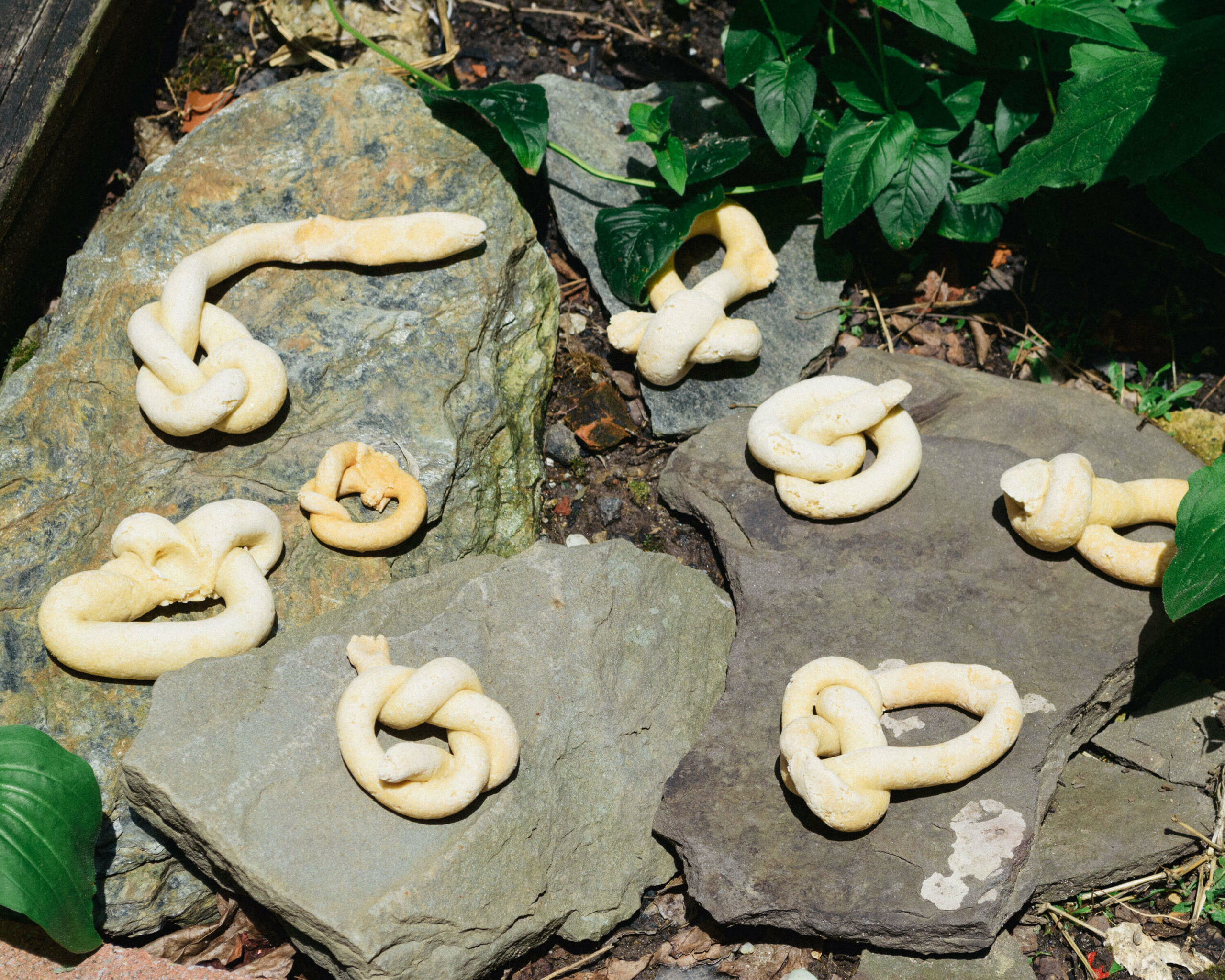In the 1989 Brazilian short film Ilha das Flores(Isle of Flowers) by Jorge Furtado, the audience follows the life of a tomato from the field to the landfill. The film begins on a Japanese-owned plantation where the tomatoes are grown, after which they are shipped to a supermarket where they are bought on sale by a housewife who, upon finding a less than desirable tomato in the lot, tosses it out. The trash eventually makes its way to the titular island where it is bought by pig farmers as discount feed. The produce that the pigs reject is solely reserved for visibly impoverished inhabitants of the island who are then permitted to collect them.
The film appropriates the style and pace of a mid-19th century short documentary film (think, The Power of Ten by Charles and Ray Eames, 1977) but interjects at times with surreal tangents about the Holocaust, whales, Japan, pigs and assumptions implicit in global economic systems. It efficiently distills the unfathomably long trails of products and the material and economic forces that uphold what is assumed to be a stable and even inevitable global structure of production and circulation. The supermarket in the film operates as a crucial node in the circulation of the modest tomato, transforming it from a reproductive body part of a plant into an economic unit to be exchanged until it lands in someone’s gut or decomposes in a landfill by way of animals, insects, and microbes. The market becomes the point at which deeply complex and living (or formerly living) organisms are stripped of their contexts and rendered one of many of the same in order to comply with the expectations of a global food (and economic) distribution system.
The abundant sensibility of the supermarket is a calculated representation of economic, technological, and agricultural excess. The American Supermarket format is aesthetically devoted to the controlled representation of the latest agricultural technology while utilizing increasingly distant and degraded references to an all but completely fabricated pastoral American history. Identical fruit is displayed piled in wooden crates or bins while dairy and egg packaging features images of barns and pastures that no chicken or cow involved has ever seen or set foot (or hoof) in. Meandering through the spiral maze of the market, you might arrive at the “butcher”, styled as its own discrete shop to pick up pre-packaged ground beef (ground in-house if you’re lucky). This miniature village market format intends to soften the uniformity of the Supermarket, with a preference to be seen as analogous to an older style of shopping, just elevated with all the trappings of modernity. In actuality, the Supermarket is a place of almost complete surveillance and documentation of customer behavior in service of the design of future and increasingly modern marketplaces. The Supermarket becomes a space that trades in various forms of obfuscation, in which invisibilized systems of agriculture and labor coexist with the hidden systems of supply chains and consumer surveillance. In essence, a sublime space of encounter between individual humans and an infinite number of species and sorts of technologies.
One TikTok account, @grocery_goblin, is attempting to capture this supermarket sublime. Run by private chef Vanessa Anderson, the account posts videos that stitch together shots of produce displays, accumulations of price stickers, faded posters, and Vanessa’s hands holding particularly beautiful examples of packaging, all narrated with voiceover and at times punctuated with comment from the proprietors themselves. In a recent conversation, Anderson tells me that she first started the Grocery Goblin project as an “indexing project” which positions “the grocery store as a lens to examine American culinary and consumer culture” with the grocery store acting as “a visitor center of sorts, an interactive museum ripe with information.”
The sublime as a term leaves a long and fractured trail of thinkers and artists concerned with the relationship between humans, nature, technology, beauty, and the ineffable. Ostensibly beginning in the work of Longinus in the 1st century AD in the work Peri Hupsous/Hypsous or On the Sublime, it was taken up again following its translation in the 17th century. It became a term of great interest to philosophers, writers, and painters grappling with the onset of their respective modernities. Significant and oft-cited contributors to its meaning are Edmund Burke and Immanuel Kant, both of whom focused on the sublime and its aesthetic significance within and in connection with beauty in the 18th century. The sublime in these early cases was almost completely intertwined with the experience of so-called nature. Specifically experiences of nature that induced simultaneously pleasure and terror upon encountering them. The Kantian sublime is an experience internal to a (human) subject, and exists in the impossible reconciliation of a dichotomy of contemplating fear from the vantage point of a safe place —not being ‘actually’ afraid vs being unafraid in the first place. As Kant writes, “And we like to call these objects sublime because they raise the soul’s fortitude above its usual middle range and allow us to discover in ourselves an ability to resist which is of a quite different kind, and which gives us the courage [to believe that we could be a match for nature’s seeming omnipotence.” (Critique of Judgement, Immanuel Kant) Therefore, in all cases the sublime necessarily requires distance or virtuality to fully appreciate the distinctly ‘safe’ terror or horror of the encounter of this (often ‘natural’) magnitude. In essence, the sublime’s intimate tangle with the landscape and objectified nature leads to a range of fictions and representations that provide an aesthetic field in which to place encounters that complicate the uncontested dominance of humans in an otherwise non-human world.
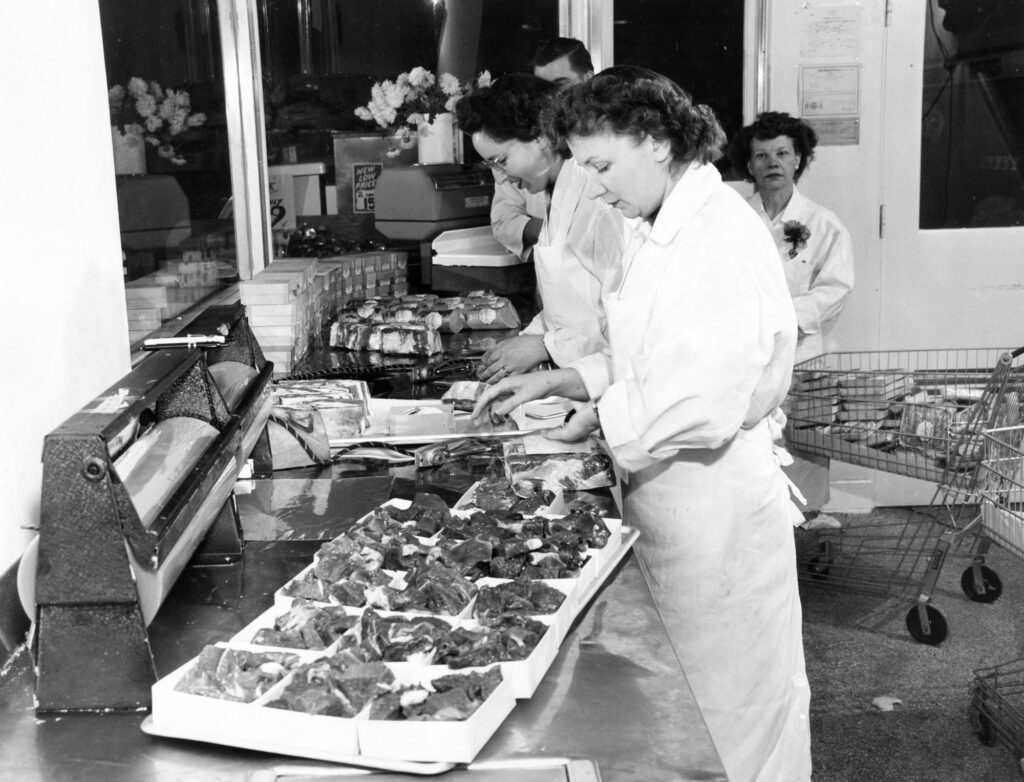
In the early days, Supermarkets created monopsonies of buying in order to undercut the prices of smaller grocers through calculated loss leaders in more expensive departments (the butcher for example) and by buying in such quantities as to make it impossible to compete. The government quickly stepped in to regulate prices in response to a boom in the opening of Supermarkets and grocery chains across the country. But the appeal of the format never waned and all but became ubiquitous, replacing previous modes of buying food (ex: market arcades, peddlers, covered markets, street stands). Supermarkets now average about 46,000 square feet and are defined as per the U.S. FMI Food Industry Association as “Stores offering a full line of groceries, meat, and produce with at least $2 million in annual sales and up to 15% of their sales in general merchandise (GM) and health & beauty care (HBC). These stores typically carry anywhere from 15,000 to 60,000 SKUs (depending on the size of the store), and may offer a service deli, a service bakery, and/or a pharmacy e.g., Albertsons, Safeway, Kroger and Prime Supermarket.” Supermarkets make up a significant portion of the regular food shopping of the average American, with retail food sales in the United States amounting to just shy of 850 trillion dollars in 2022 ($848,481,252,512 to be exact) according to the USDA.
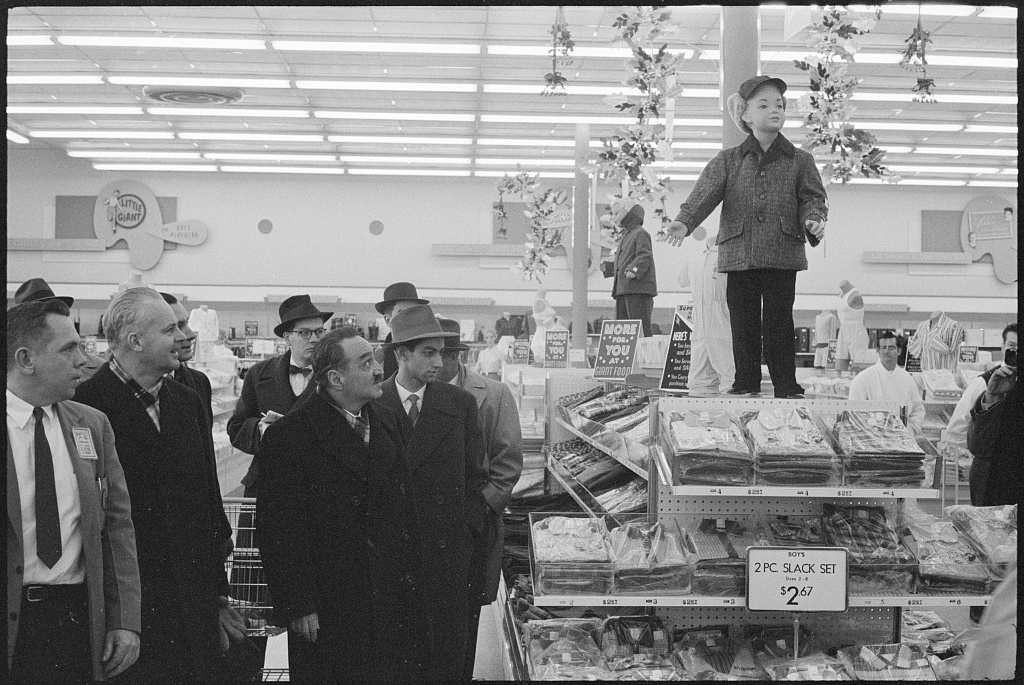
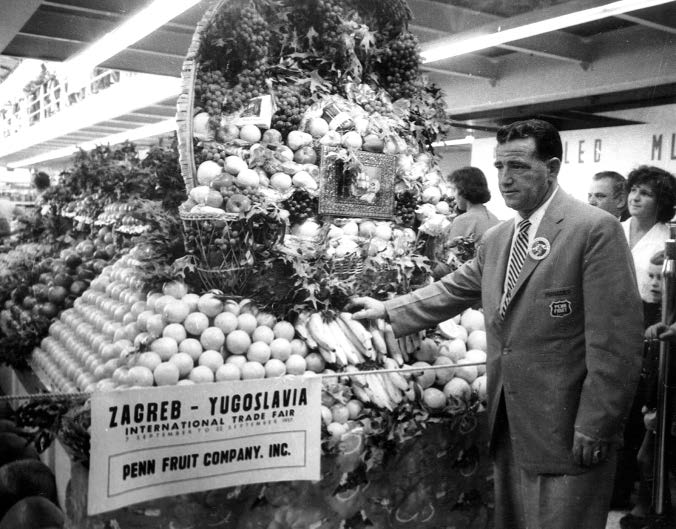
The American Supermarket was such a resounding market success that it was quickly identified as a compelling instrument of soft power in the international arena, in particular as an expression of perceived American agricultural and technological superiority in the Cold War. The United States took every opportunity to show off or export the format in countries with vibrant left and communist politics. Venezuela and Italy were the first countries to receive American-style supermarkets, owned and operated by American companies. An American supermarket was exhibited in Yugoslavia in 1957 as well as at the 1959 American National Exhibition in Moscow, a calculated choice by the United States to present the typology, aesthetically characterized by abundance in the produce and and frozen/refrigerated displays, in a Soviet context where the government was in the midst of building a centralized food system. The intention was to deteriorate support for the respective governments and sympathies for the communist and non-capitalist systems but, the format was ultimately appropriated by the USSR as a solution for state distribution of goods, leaving behind the free-market system that American politicians had intended to spread. Jean-François Lyotard identifies the tenuous construction of this dynamic which is all but naturalized in the global north, “There is something of the sublime in capitalist economy. It is not academic, it is not physiocratic, it denies nature. It is, in a sense, an economy regulated by an Idea––infinite wealth or power. It does not provide any example from nature that might verify this Idea. In subordinating science through technologies, it only succeeds in making reality appear increasingly intangible, subject to doubt, unsteady.” (The Sublime and the Avant-Garde, Jean-François Lyotard)
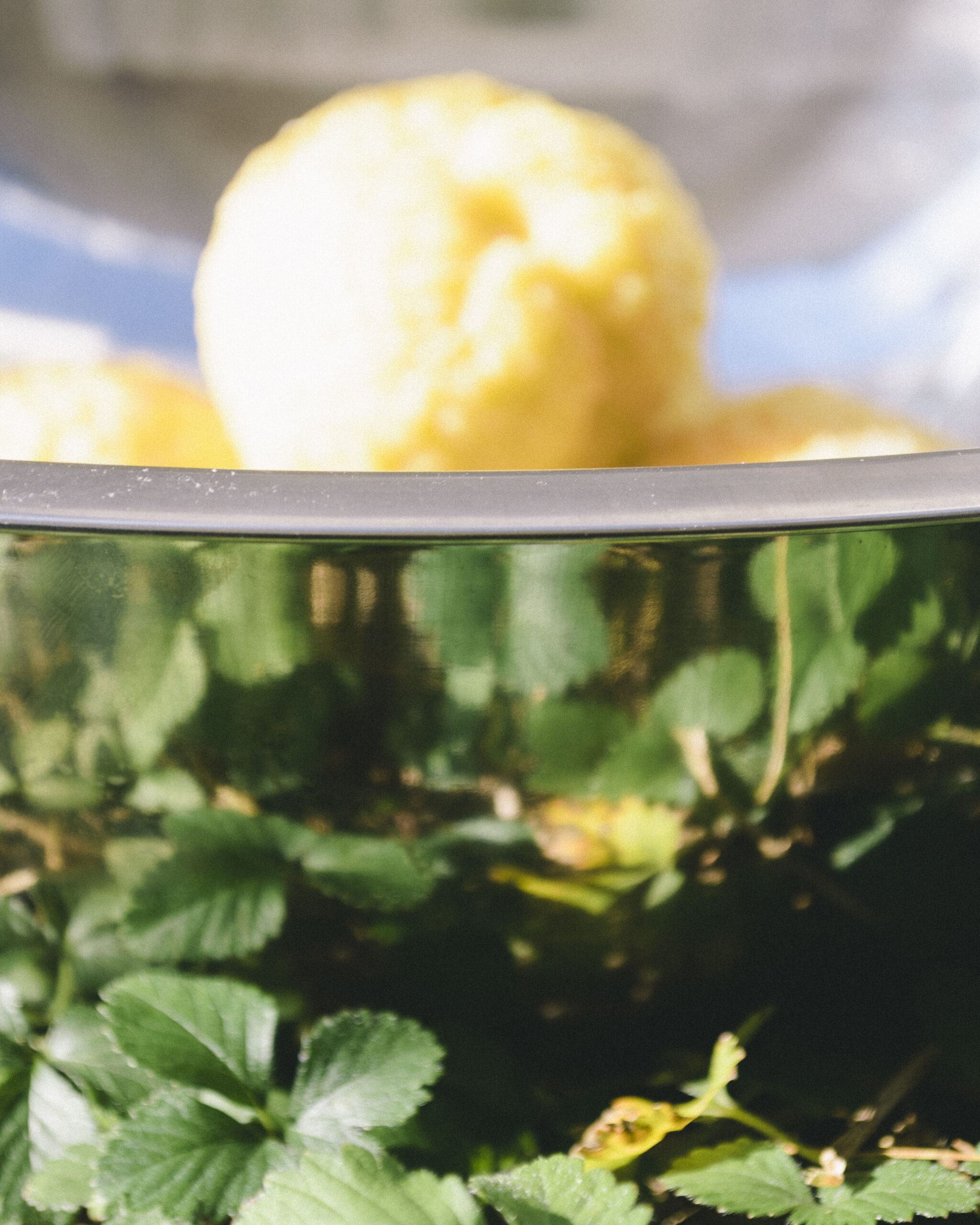

When explaining her inspiration for Grocery Goblin, Vanessa proselytizes an approach to grocery shopping that preferences awareness and care: “I always think back to the act of saying grace before a meal, and how at its core, its function is to honor where and how the meal arrived on your plate, and those you’re sharing it with (at least I think this is the point of grace, I’m not religious).” This approach necessarily invokes the sublime in its almost but not quite spiritual stance, as “from its inception, the sublime offers itself as an aesthetic analogue of religious experience.” (The Theory of the Sublime from Longinus to Kant, Robert Doran,) There is then, it seems, incendiary and contemplative potential in the sublime realization of one’s participation and implication in vast economic, natural, and technological dynamics. The sublimely ineffable disappearance of the difference between you and the seasonal worker harvesting the tomato and the tomato itself serves a kind of controlled terror and its requisite accompanying pleasure that you are, in fact, irreversibly intertwined with everything else.
⦂ An Abbreviated and Incomplete Recipe for a Tomato⦂
Tomato seeds
Climate controlled nursery
Electricity (source variable)
Grow lights (including various metals and plastics to rig and operate)
Seedling specific substrate
Well drained site with good air circulation
Irrigation
Polyethylene and steel tunnels (optional)
Prepared soil including but not limited to additions of compost, manure, or synthetic fertilizers
Supports for tomato vines (natural fibers, plastic, or metal)
Pesticides and pest management systems
Fans/air circulation
Climate controlled storage
Crates and boxes for distribution
Printer for stickers and labels
Climate controlled trucks, trains, and/or planes for distribution
Labor to plant seeds, oversee irrigation, to plant seedlings, to harvest and sort, transport, move crates, and arrange on the supermarket floor
Transportation for workers
Restrooms for workers (and associated materials, ex: toilet paper)
Housing for workers
Health insurance for workers
Food for workers (tomatoes?)
